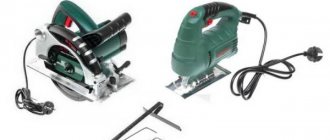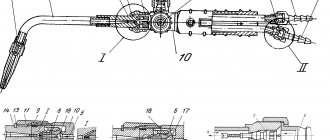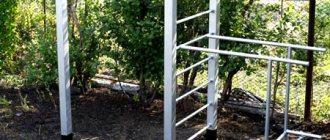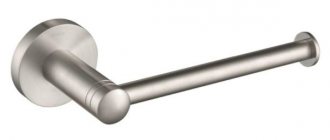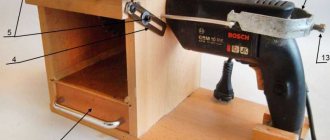A jigsaw has become one of the must-have tools in the arsenal of any home craftsman. It is capable of making a curved cut along the intended line, which allows it to perform openwork carving and other complex types of work. There is no equivalent replacement for a jigsaw; all other tools are either designed for straight cutting or are not capable of performing cutting work (in a closed loop).
In addition, the tool can cut various materials, from metal to drywall. This makes it a necessary and must-have device for both amateurs and professionals. Compactness, light weight, and ease of use with a jigsaw are highly rated by users. When purchasing, it is important to choose the most suitable model that is optimally suited to solve the upcoming problems. Let's take a closer look at this issue.
Purpose
A jigsaw can perform operations that cannot be done with other cutting tools. For example, sawing along complex curved lines, cutting out ornaments and figured parts.
In other parameters (speed, accuracy and thickness of the cut), a jigsaw is significantly inferior to other saws - circular, band and reciprocating saws. But its light weight and the ability to cut along curved lines, and even in circles, make the jigsaw an indispensable, specialized tool for certain jobs.
With its help they saw:
- tree,
- plywood,
- MDF, fiberboard, chipboard,
- plastic, plexiglass, polycarbonate,
- sheet soft metals, steel.
For each material, special files are used, which differ in the size and frequency of the teeth, and the quality of the alloys.
Jigsaws equipped with batteries
For ease of use, it is preferable to choose those models that do not have a cord. This version of the device allows you to be more mobile during production operations. The following are the best makita jigsaws of 2021 that have a battery in their design.
MakitaJV100DZ
Using this device, you can perform absolutely all types of work that a corded jigsaw can do. This device works on all types of materials, from metal to plastic.
pros:
- no need to look for an outlet to work;
- you can adjust the stroke using a pendulum mechanism;
- light in weight, which makes work quite convenient;
- inexpensive.
Design and operating principle
This is a relatively simple tool that consists of the following components:
- frame,
- base plate,
- electric motor,
- transmission mechanism (on the file).
But, despite its fundamental simplicity, the product uses many of the latest developments and inventions in the fields of mechanics, materials science, electronics and electrical engineering. Namely - alloys, powder metallurgy, plastics, devices for speed control and engine protection, on some models LED backlighting, laser pointers, etc.
The transmission mechanism converts the rotational motion of the electric motor into reciprocating motion. As a result, the file of the tool moves up and down and cuts exactly according to the same principle as a hand saw, hacksaw or jigsaw. At the same time, the file is short in length, but operates at a very high speed, compared to hand tools, from 500 to 3500 strokes/min.
Most models have a more complex transmission unit, which is equipped with a pendulum stroke. In addition to the reciprocating motion, it gives the file pendulum oscillations back and forth. This promotes the ejection of sawdust, increases sawing speed and reduces the likelihood of saw blade jamming.
Structural properties and features
To choose the right jigsaw model, you need to consider the following characteristics:
- Engine power - the more powerful it is, the better it can handle sheet metal.
- Stroke frequency is the speed at which the saw blade moves. The average maximum frequency of most models is 2500 strokes per minute.
- The depth of cut is the thickness of a certain material that the tool can handle. Indicated separately for metal and wood.
- Power type: battery or mains.
- Continuous operation time - shows how long the tool can work without rest.
- Additional features - the more features, the higher the price of the tool. Useful additional functions: pendulum stroke, sole angle, soft start, backlight.
Classes
Today, consumers are offered a wide selection of these power tools. To make the right choice, you need to navigate their features and classes.
Household
These are the lightest models in weight, with a relatively low-power engine. Their advantage is low price. The disadvantage is a shorter service life compared to more serious products. Engine power from 350 to 500 W. Weight – up to 1.5 kg. The average cutting thickness is up to 65 mm for wood and up to 6 mm for metal.
Tip #1. Household jigsaws are not designed for long-term daily use; in this mode they quickly break down. Therefore, when choosing a tool for everyday work, focus on professional models. Examples of specific models are at the end of the article.
Suitable for home and everyday life, auxiliary work in small carpentry workshops with low load.
Professional
This is a more powerful and expensive category. All components and materials are designed for the longest service life. Power from 500 to 900 W. Weight up to 3 kg. Capable of sawing timber with a cross-section of 100-120 mm and soft metal up to 30 mm thick.
You should know that there is no clear boundary between the “domestic” and “professional” groups. If a jigsaw has a powerful engine, dimensions and weight, this does not automatically classify it as professional, although the manufacturer may position it as such.
In order for a tool to actually meet this class, it must have a long service life without breakdowns. As a rule, these are models from well-known brands that value their reputation. Their difference:
- Convenient layout, excellent ergonomics. The instrument fits well in the hand, is mobile and obedient to every movement.
- All metal parts are solid metal, stamped or cast, without the use of powder metallurgy (injection molding from metal powder and glue).
- There is no “saving on everything”, the power cord is at least 1.5-2 m long.
The main difference between a professional tool and a household one becomes noticeable only after long use. Such equipment must withstand operating conditions of 4-6 hours daily for several years.
Used in carpentry workshops, construction, finishing and other permanent works.
Industrial
These are no longer manual, but stationary machines. They have a frame, a work table, and an engine with a sufficient power reserve.
Able to work without interruption throughout the entire work shift, service life is 5 - 10 years or more. Provides high cutting speed and accuracy. Analogues are band and circular saws.
The cutting unit of an industrial jigsaw is a file with a reciprocating motion, so such machines belong to the class of jigsaws. In this niche, brands that produce industrial equipment for factories, factories and large workshops have a good reputation.
Stationary household and professional
These are machines of the same type as industrial ones, but of low power and dimensions, and are quite affordable. They have a fundamental difference from manual jigsaws in design and capabilities. If you can cut a long sheet of plywood with a mobile hand jigsaw, then dragging such a sheet along the narrow bed of a stationary jigsaw is difficult. This is not required from the stationary version; it was created to perform its special tasks.
With its help you can effectively:
- Cut tenons on small workpieces, rectangular or complex shapes.
- Cut out patterns and ornaments on sheet material.
- Make small curved parts, functional and decorative: overlays, vignettes, handles.
By using different files, you can cut different materials. Therefore, the range of applications is not limited to small carpentry production.
Stationary jigsaws have low-power motors, from 50 to 150 W. But this is enough to saw through any intended workpieces that fit in height into the working field of the machine.
Such machines use thin files; sawing creates little friction and resistance, so powerful motors are not required.
Unlike manual models, stationary jigsaws always provide more accurate cuts. The file cannot move to the side, since it is fixed at two ends, at the top in the drive and at the bottom. This allows you to achieve pinpoint precision when working - when feeding a workpiece without excessive effort, the cut will be made exactly where the workpiece will be directed.
Rechargeable
In principle, these are the same tools as low- and medium-power network tools. Power is limited by the capabilities of the battery, so high-power cordless jigsaws are not produced.
Tip #2. The characteristics of cordless jigsaws do not contain data on power in W, like network ones. When choosing, the power is assessed according to the maximum cutting depth indicated in the characteristics and the battery voltage (from 12 to 18 V). When choosing, follow the rule: the greater the cutting depth required during operation, the higher the battery voltage should be. For example, for 2 mm plywood 12 V is enough, and for a 50 mm board, 18 V is better.
Pros: the absence of a power cord makes work more convenient, especially when cutting long sheets of plywood, fiberboard and other materials. Until the battery runs out of charge, you can work anywhere, regardless of whether there is a nearby electrical outlet.
Cons: higher cost, lower power, need for regular recharging.
The best jigsaws. We cut everything we can get our hands on!
Would my friend and I be able to assemble the kitchen ourselves without a jigsaw? Or even finish the renovation with all this drywall, sockets and other things? I think no. This tool is indispensable for both the home handyman and the professional builder. Even a beginner like me can handle it if he is willing and attentive. True, before buying it, you first need to study what is called the theory: what types of jigsaws are there, what they can do, which companies are the most reliable. I've already been through all this. Therefore, as an experienced person, I’ll tell you how to choose the best jigsaw in my subjective Top 11.
Based on what characteristics should you choose?
The parameters by which a jigsaw is evaluated are given in order of their importance. The most important ones first, and then in descending order.
Engine power
The power directly determines how the tool will cope with loads. In principle, a jigsaw with any engine is required to cut a workpiece of the thickness specified by the manufacturer.
For example, the characteristics of jigsaws with a power of 500 and 800 W may indicate a maximum cutting thickness of 60 mm. But this only means that the file extends from the support platform to such a depth. In this case, sawing a low-power option will be difficult, with a noticeable load or even overload. A powerful jigsaw, on the other hand, will work faster without feeling the strain, and will ultimately last longer.
Tip #3. Excessive power should also be avoided - the more watts, the heavier the tool itself, the higher the price and the higher the energy consumption, which increases the cost of operation.
If you do not plan to cut large-sized workpieces, most buyers for everyday use choose models of low and medium power, up to 500-600 W.
Power type
The cordless version is convenient for working at heights, at a distance from the mains, and for cutting large-area sheet material.
The jigsaw has to be moved, for example, along a sheet of plywood 2.5 m long. In this case, the wire gets caught at the back, it can get tangled, or it may not be long enough. All this creates inconvenience. In such cases, the wireless option is better.
For other work on a workbench or table, a cordless jigsaw has no advantages. The network version is always ready for use; it is more convenient because you do not need to charge the batteries and have and store a charger. In addition, battery options are more expensive than mains ones.
Cutting depth
The maximum size of the workpiece that can be sawed depends on this parameter. The greater the depth of cut, the wider the possibilities. But you shouldn’t rely on depth as a determining parameter.
To cut large-sized workpieces, as a rule, another tool is used - circular saws, band saws, or chain saws.
A jigsaw is a highly specialized tool, and is mainly focused on thin-sheet material and wood up to 25 mm thick. Although in some cases it can be used to cut workpieces of great thickness, and it is better when the tool has such a technical capability.
Blade stroke, maximum frequency
The stroke of the saw is assessed according to two indicators:
- Stroke length. This is the distance the blade moves up/down when cutting. The parameter is not always indicated in the characteristics of online stores, but almost always in paper Operating Instructions. For example, a jigsaw with a cutting depth of 70 mm has a saw blade stroke of 20 mm. This is an average and sufficient indicator. In order to provide a larger stroke, it is necessary to structurally increase the parts of the reciprocating mechanism. This leads to an increase in the dimensions and weight of the tool and reduces the cutting accuracy. A smaller stroke reduces the sawing speed at the same frequency.
- Stroke frequency. This is the number of ticks (up/down) per minute. For different models with adjustable frequency, this indicator ranges from 500 to 3500 cycles/min. The optimal speed for each material is set by adjusting it through trials during actual sawing. For some materials, a lower frequency is better, for others, a maximum frequency. For example, plastic can melt at high speed , heating up from friction with a file. When sawing different metals, individual selection of speed is also required. For example, it will not be possible to saw plywood or plastic at too low a speed, since the teeth will simply catch and get stuck.
The higher the maximum possible frequency, the more capabilities the jigsaw has.
File shank shape
Most saw blades for different jigsaws have a standard fit and are interchangeable. That is, they are suitable for all jigsaws. The standard shank is shaped like the letter T. The removed file resembles a knife, where the shank looks like a handle with a stop.
The exceptions are U-shaped shanks (American standard), T-shaped shanks with an additional stop bar for older models of Bosch jigsaws, and files with a unique shank shape for old Makita jigsaws.
There are few such tools left today, and special files for them are difficult to find on sale.
Method of fastening the file
On modern jigsaws, two methods are used to fix the file in the groove of the rod:
- Threaded clamp using one or two screws, most often with a hex head.
- Automatic lever clamp.
The first method fixes the file more securely, without play, regardless of its thickness. The downside is that tightening a bolt with a wrench is somewhat more difficult than instantly tightening it with a lever. Moreover, caution is required; if too much force is applied, the thread can be torn off.
The second method is more convenient. The lever is pressed out, the old file is pulled out, a new one is inserted, the lever is pressed. It's fast and convenient, no key required. Disadvantages - such fixation sometimes allows the file to play, or a file with a thick blade may not fit into the groove of the automatic clamp, and a thin one may dangle. Different models use different mechanisms. But often on household models they are short-lived. Professional jigsaws use threaded clamps or reliable automatic ones.
Tip #4. Taking into account the fact that files are not changed often, the difference in replacement time between the first and second options does not matter. Therefore, threaded clamps are preferable. If the thread on a bolt breaks, it can be replaced.
Auto-clamping is justified when you need to cut several different materials within a short time and you have to frequently rearrange the files. This improves productivity.
File material
Included with the jigsaw, the buyer receives one or several files made of different materials for sawing wood, MDF, chipboard, fiberboard, soft metals, etc. They are made from hardened carbide steels of various grades, including HSS. But the modern market offers owners of jigsaws about a hundred varieties of files for different purposes.
- For sawing metals, files are made of high-speed steel alloyed with cobalt, tungsten, vanadium or molybdenum. They have small, heat-treated (hardened) teeth.
- For wood and other soft materials - durable steels with relatively large teeth.
- For carving ceramics along curved (curly) lines, files are made of durable steel coated with diamond or tungsten.
The files also differ in size. With a standard shank, they have different thicknesses, lengths and tooth pitches. A long blade will increase the maximum depth of cut, even beyond the values indicated in the specifications.
The cutting depth can be limited by the power of the jigsaw itself. At the same time, the longer the file, the more difficult it is to make an accurate cut. A long file pulls strongly to the sides.
Other options:
- For more precise sawing of thin material, use short thick files.
- For precise sawing of large workpieces in a straight line, saws with a wide blade are used; they are kept from moving to the side by the solid wood itself.
- The harder the material, the finer the tooth should be on the file.
- For figured sawing, including in circles, use narrow files.
Tip #5. You should choose the right file. The correct selection and quality of the cutting blade affects the work, if not more than the jigsaw itself, then by no less than 50%. A jigsaw, good quality or not, sets the file in motion. And the sawing process is carried out with a file. Therefore, a lot depends on her choice.
Sole angle
In the standard position, the file is strictly at right angles to the supporting sole. The cut is also made at right angles. If necessary, you can make a cut at any angle.
For this purpose, the design of almost all manual jigsaws provides for adjustment of the angle of inclination of the support sole. The clamp screw is released and the sole is tilted to the desired angle.
For ease of orientation, gradation is applied to the clamping arc, like on a protractor. The sole tilts relative to the file from 0 to 15, 30 or 45 degrees , depending on the model.
Since such a tool mainly has to cut thin material, the cutting angle (for example, on 2mm thick plywood) is extremely rarely important. If a jigsaw is purchased specifically for sawing tasks at a certain angle, you should pay special attention to this indicator when choosing.
Rating of the best Makita cordless jigsaws
Cordless jigsaws are convenient due to the absence of a wire, which increases the operator’s mobility and allows work to be done even in places without 220 V. The only thing is that you need to remember about the limited energy reserve in the battery and have a sufficient number of replaceable batteries. When selecting the Makita tool for this and the next category, we assessed the following parameters:
- number of moves;
- weight;
- maximum cutting thickness;
- stroke length;
- complete set;
- additional functions.
The list of the best was also based on customer reviews that tell how Makita power tools behave in practice.
Additional functions
These include features that are found on almost all, and those that are found only on certain models. Almost all models have the following features.
Speed adjustment
This is an important function. Having started sawing any type of material, the operator selects the most optimal speed through trials using a regulator.
Some materials are best cut at maximum speeds, such as chipboard. On others, the file may overheat due to friction, which causes the metal to harden and the file becomes unusable, and the material itself may melt (for example, plastic or plexiglass).
Pendulum stroke
When this function is turned on, the file moves not only up and down, but also back and forth (swinging). At the same time, sawdust is better removed from the cut, the file does not get stuck, heats up less and cuts faster.
Tip #6. Choose a tool with this feature if you plan to cut medium to thick materials. The mode is effective when sawing thick wood pieces. For example, boards with a thickness of 30 mm or more. Different models provide either simple activation of the swing mode, or with adjustment of the oscillation frequency.
Adjusting the pendulum oscillations (swing) provides some additional options for choosing the sawing mode, but complicates the tool. The disadvantages of sawing in this mode are that the cutting accuracy decreases.
Also, modern jigsaws may have functions that are not found on all models.
Maintaining speed under load
An electronic system regulates the current supplied to the electric motor - less at idle, more under load. The greater the load on the electric motor, the greater the current supplied and the higher the power produced.
The function is useful, since to a certain extent it maintains constant speed under different loads. But its capabilities are limited. Under heavy load, a motor with a power of, for example, 600 W will not be able to develop a power of 1500 W. However, with such a system, the tool operates smoother under certain load conditions.
Smooth start
Most electric motors, when starting, consume three times the rated power from the network. That is, a 1 kW engine consumes 3 kW at the time of start-up. And although jigsaws are not equipped with powerful motors that can greatly “drain” the voltage in the network at the moment of starting or even “knock out the machine,” a soft start ensures even energy consumption without overloads.
In addition to electrical, the system also provides mechanical safety. If, at the moment of switching on, the saw accidentally finds itself dangerously close to a person, an electrical wire, etc., a soft start gives time to correct the situation, since the saw does not immediately start working at full speed.
Chip blowing
When making cuts according to the markings, the operator monitors the accuracy of the cut, based on the coincidence of the markings and the file. The contact point between the saw and the marking is often covered with sawdust, which makes work difficult. You have to stop to blow away or sweep away the sawdust.
To prevent sawdust from interfering with work, some models have a function for blowing sawdust out of the work area using a fan. This is a useful feature, but not on all materials. For example, heavy metal shavings are not blown away.
Laser pointer
Helps in certain cases. For example, if you need to cut a sheet of plywood or fiberboard, it is not necessary to draw a mark along the entire sheet. It is enough to make marks (risks) at the beginning and end. Having aligned the saw to the initial mark, use a laser pointer to aim at the end mark and make a cut according to the pointer.
Tip #7. When using a laser pointer, you should not rely on an even cut, because... there is a serious drawback - sometimes the file wobbles on its own, and the cut does not always turn out smooth. The laser is also useless for curved and shaped cuts.
The laser pointer can be powered by batteries or mains power. The second option is better - there is no need to replace batteries.
Backlight
A small LED light illuminates the working area above the file. The function is useful when working in low light conditions in this location. This can happen even in a well-lit room if the shadow of the jigsaw itself or the operator obscures the work area.
Advantages and disadvantages
Like any tool, a jigsaw has pros and cons, so it is advisable to study them before purchasing a specific model. Let's look at the advantages of all Makita jigsaw models:
- Versatility.
- A large assortment.
- Low price.
- Large selection of saw blades.
- Safe saw blade replacement.
- Ease of making straight and curved cuts.
- Fast operating speed.
- Allows you to save on finishing materials.
- Work safety.
- Compact and light weight.
- Availability of convenient additional functions.
Disadvantages of Makita jigsaws:
- Low power of a lightweight and cheap tool. The higher the power, the heavier and more expensive the tool.
- Limited maximum thickness of the processed board.
- The saw blade often breaks when cutting thick materials.
Ergonomics
Despite the apparent simplicity of a jigsaw, arranging all the components of the device in the most convenient way for the user is a difficult task. Sometimes the jigsaw is too heavy, or is poorly centered and tips to one side.
What matters is the visibility of the working area (file), the shape and location of the handles, the proportions of the length and height of the body.
Tip #8. Check the tool for convenience “without leaving the cash register.” How successful the layout is can be easily assessed by simply picking up several different models. Your hands will immediately feel a good and comfortable tool.
In addition to these obvious points, you should pay attention to the length and elasticity of the power cord. Too short will require an extension cord, the socket of which will cling to the workbench and interfere with work. A rough cord reduces the mobility of the tool.
Auxiliary devices for working with a jigsaw
How to choose the right jigsaw, with only the most necessary set of functions, without overpaying for unnecessary ones? Undoubtedly, each additional function makes the work easier, for example, to quickly make cuts parallel to the edge, you need a rip fence.
Note! For circular cuts you will need a compass stop. A guide rail will help you make cuts perpendicular to the edge.
Before purchasing a device, it is recommended to determine the scope and frequency of its use. This could be rare finishing works or artistic wood carvings. For your home and garden, you can choose a household or semi-professional model of average cost. The weight of the device also plays an important role. The more powerful the engine, the more the device weighs.
Compass stop
Devices may also differ in the shape of the handle. Models with an arched handle for short work are considered the most comfortable, according to user reviews. With such a handle you can make straight cuts very accurately.
How to choose an electric jigsaw if you need to cut not only wood, but also metal? When working with different materials, you should pay attention to models that have a built-in speed controller. Despite the fact that the clamping mechanism is convenient, it is still better to choose the option with 2 screw fastenings. It is more reliable and practical. In addition, you will have to select native blade models for auto-clamping models.
Equipment
The configuration of jigsaws depends on the brand, specific model and price. Some, even professional ones, only come with a product passport, a key for adjusting the tilt of the platform and attaching the file.
In addition, other models are supplied with:
- Set of files.
- Spare carbon brushes.
- Guide ruler.
It is impossible to determine how much advanced equipment increases the cost of the product. But if the instrument is sold with minimal equipment, this cannot be considered a big drawback.
Files, as a rule, are purchased over time, new ones and exactly those that are required for the job.
Tip #9. In most cases, budget models are equipped with carbon brushes. In high-quality tools, carbon brushes are changed extremely rarely; in practice, their service life can exceed the entire service life of the jigsaw. In addition, modern tools with brushless motors have become available for sale.
Basic malfunctions and their elimination
Makita jigsaws are famous for the fact that they rarely break and always produce high-quality and neat work. But there are situations when they have malfunctions:
- Crooked cut - first check the sharpness and cleanliness of the saw blade; if the problem persists, then the problem is a malfunction of the saw blade or rod fastening mechanism.
- Strong vibration and noise - the gearbox is out of order, there is no lubrication or the teeth on the gear are damaged. You need to remove the housing from the side to inspect the parts.
- Strong shocks during cutting - the pendulum mechanism or rod is dirty or damaged. They are cleaned, lubricated with oil, and if the problem does not go away, they are replaced.
- The jigsaw does not turn on - the power cord is damaged or the power button is broken.
- Fails to cope with the load - engine damage. This breakdown is often accompanied by a burning smell.
- Reduced power and burning smell - the wiring is damaged.
- A large number of sparks means a malfunction of the engine or breakdown of the graphite brushes.
Which electric jigsaw should you choose for your home and garden?
The most popular jigsaws for household use are models from well-known brands with a good reputation, average power and cost. With their help, you can solve almost all tasks that such a tool can perform. At the same time, they are quite reliable, which is why they have gained popularity. These are the following models.
Makita 4329 450 W
This is a Japanese brand. Regardless of the country of manufacture, the design is distinguished by its traditional Japanese product compactness, ease of use, light weight and relatively low price - about 4,000 rubles. It has additional ventilation holes, so it can work for a long time without overheating the electric motor.
- The frequency of saw strokes is from 500 to 3100 rpm.
- The saw stroke amplitude is 16 mm.
- Cutting depth is 65 mm for wood and 6 mm for steel.
- Pendulum stroke adjustable in 4 steps.
- Adjusting engine speed.
- Weight 1.9 kg.
BOSCH PST 700 E 500 W
A model from a German brand, popular among professional builders and woodworkers. Can be produced in EU countries or China.
Thanks to the carefully thought out shape of the handle and layout, it fits comfortably in the hand. Features: the use of the “Low Vibration” system reduces vibrations to a minimum, which distinguishes the model from others. There is a system for blowing sawdust from the working area. Supplied in a hard case.
- The frequency of saw strokes is from 500 to 3100 rpm.
- The saw stroke amplitude is 16 mm.
- Cutting depth is 70 mm for wood and 4 mm for steel.
- There is no saw blade pendulum mode.
- Weight 1.7 kg.
- Cost – 4.5-5 thousand rubles.
DeWALT DWE349 650 W
A more powerful option for household and professional work. The long cable (4 m) allows you to do without an extension cord for many jobs. There is a function for blowing sawdust out of the working area. The saw blade clamp is keyless.
- The frequency of saw strokes is from 500 to 3200 rpm.
- The saw stroke amplitude is 20 mm.
- Cutting depth is 85 mm for wood and 10 mm for steel.
- There is a pendulum mode for the saw.
- Weight 2.66 kg.
- Cost – about 6 thousand rubles.
BISON L-400 400 W
Russian brand, country of assembly: Russia or China. One of the lightest, simplest and inexpensive jigsaws. A suitable option for rare auxiliary work.
- The frequency of sawing strokes is up to 3000 rpm.
- The saw stroke amplitude is 18 mm.
- Cutting depth is 55 mm for wood and 10 mm for steel.
- There is no pendulum stroke.
- Weight 1.4 kg.
- Cost – about 2.5-3 thousand rubles.
Interskol MP-55/500E 500 W
The Russian brand has already become famous and has gained a good reputation for the quality of its products. The country of assembly is formerly the Russian Federation, today mainly China, under the control of Russian designers and engineers. The product comes with a good 2-year warranty.
Can be used for any work.
- The frequency of sawing strokes is from 800 to 3000 per minute.
- The saw stroke amplitude is 18 mm.
- Cutting depth is 55 mm for wood and 10 mm for steel.
- There is a pendulum stroke with adjustment in 4 steps.
- Weight 1.6 kg.
- Cost - 2.1-2.7 thousand rubles.
Rating of the best Makita jigsaws
| Nomination | place | Name of product | price |
| best Makita cordless jigsaws | 1 | Makita DJV182Z 0 | 14 036 ₽ |
| 2 | Makita JV183DWE 1.5Ah x2 case | 12 330 ₽ | |
| The best Makita corded jigsaws | 1 | Makita 4350CT | 9 439 ₽ |
| 2 | Makita JV0600K | 6 739 ₽ | |
| 3 | Makita 4329X1 | 3 680 ₽ | |
| 4 | Makita 4329 | 3 485 ₽ |
How to choose a good jigsaw for use in your home workshop?
When choosing a tool for a home workshop, the main thing is functionality and technical characteristics. The price is important, but not decisive, because material assets are produced in the workshop, the tool pays for itself.
The worst choice for a workshop is cheap, unreliable jigsaws, because you will have to buy 2-3 of them instead of one quality one. And instead of saving, there will be unnecessary overpayments and problems during work.
An example of a good jigsaw for a workshop is the Makita 4351FCT 720 W.
This is a Japanese development, which already guarantees quality, despite the country of assembly (Eastern Europe or China). All the necessary modern functions are present:
- workspace lighting,
- smooth start,
- speed adjustment,
- speed support under load,
- powerful motor, cuts wood up to 135 mm thick and steel up to 20 mm.
- saw stroke 26 mm,
- weight 2.5 kg, which is not much for such power,
- the presence of a pendulum stroke,
- long cord – 2.5 m.
Makita 4351FCT operates almost without noise and vibration, which indicates high-quality performance and assembly of all parts.
Service center technicians report that this model very rarely gets repaired during the warranty period; there are practically no defective copies. A new solution in the layout, the tool is easy to use and fits well in the hands. Supplied in a suitcase (case).
Owner reviews
Alexander: “I’ve owned a Makita jigsaw for two years now, during which time nothing has broken or fallen off. It’s convenient to change the files, and the smoothness of the ride is pleasing. When sawing, laminated chipboard reduces chipping. Insensible level of vibration and noise. The price is reasonable. I keep it in a convenient case. I don’t regret the purchase.”
Nikolai: “I’ve been plowing for five years now. All the parts are durable, I think it will work for another ten years without breaking. Any files are suitable, from expensive to cheap. Good savings. If it suddenly breaks, I’ll buy the same one.”
Evgeniy: “I make custom-made children's furniture. After carefully studying the reviews, I purchased an inexpensive Makita jigsaw and have never regretted it. Doesn't overheat, works quickly, cuts shapes neatly. Working with them is a pleasure! I recommend purchasing!”
Best Corded Power Tools
They are used in workplaces equipped with a stationary or mobile (diesel generator) electrical network. The jigsaw is capable of performing straight cuts or making shaped trajectories. Performs rough or fine finishing of material. Works on wood of various densities, chipboard, MDF, OSB, classic plywood. Cuts through plastic, steel and non-ferrous metals.
MAKITA 4236 – the first tool for a beginning carpenter
A convenient and easy-to-use jigsaw is used for sawing workpieces made of wood, plastic and metal. Capable of performing straight and curved cuts. A fairly powerful engine and an ergonomic rubberized bracket-shaped handle will allow you to master the use of the tool in a short time. An additional positive factor is light weight and low vibration levels.
- Easy to learn and manage.
- Affordable price.
- Excellent protection against overheating and vibration.
- Short cord.
- Low rigidity of the support sole.
MAKITA 4329 – the first commercial tool
The tool is equipped with a speed control system. This allows you to select the optimal cutting mode depending on the thickness of the workpiece and the type of material - wood of various densities, steel or non-ferrous metal, various types of plastic. The jigsaw is equipped with a pendulum stroke, which increases the cutting speed. The sole is tilted to produce cuts at an angle to the horizontal plane.
- Robust, rigid steel support plane.
- Overload protection.
- Reliability.
- There is no case for carrying and storage.
- There is no function for blowing sawdust from the workplace.
MAKITA 4329K x 1 – for the home workshop
The design of the tool allows for the choice of one of six speeds. The presence of a pendulum stroke with three switching stages allows you to increase the processing speed of soft and dense wood. The jigsaw cuts ferrous metal and stainless steel, cuts aluminum alloys, non-ferrous metals and plastic. Capable of processing ceramic tiles with appropriate cutting equipment.
- The complete set of Japanese files allows you to start working right away.
- No vibration when sawing.
- High-quality assembly, high reliability of the tool.
- An outdated method of fixing a file.
- The protective shield slides tightly, but does not slide off during operation.
MAKITA JV0600K – for a private workshop
Increased power of the electric motor, effective protection against overheating, and an ergonomic handle with anti-slip inserts allow you to successfully use the jigsaw in a private workshop. The electrical cable is double insulated. The tool produces straight, figured and inclined cuts in relation to the horizontal plane. The device is equipped with a speed control system.
- Optimal engine power for private work.
- Long cord.
- Very ergonomic handle.
- Weak file fixation system.
- A little heavy, but stable.
MAKITA 4350 CT – the most powerful
A powerful, high-performance tool for working on various types of wood, laminated flooring, chipboard, OSB, MDF. Copes with cutting ferrous metal and stainless steel, non-ferrous metals and plastic. The jigsaw is equipped with a quick file change system. The selected operating mode is supported by a reliable electronic control system. Duration of operation is ensured by efficient and reliable engine ventilation.
- Powerful electric motor.
- Availability of the "Soft start" function.
- Produces smooth cuts without yaw to the sides.
- There is no illumination of the working area.
- Inaccurate installation of the sole horizontally requires care and attention.
MAKITA 4351 FCT – the first for professionals
Professional grade tool. The comfortable mushroom-shaped handle allows for a secure two-handed grip, which increases cutting accuracy. This is further facilitated by the possibility of adjusting the speed, soft starting and maintaining a constant engine under variable external load. The level of noise and vibration during the working process is significantly reduced.
- Stable rigid platform.
- Illumination of the working area.
- Availability of soft start.
- Inconvenient connection of the vacuum cleaner.
- Unreliable fixation of the file.
The best corded jigsaws for home use
Bosch GST 8000E
This electric jigsaw is mains powered. The “start” button on the tool is equipped with an accelerator: the harder you press it, the higher the speed. The comfortable staple handle ensures long, comfortable work. The tool is suitable for both curved and straight cuts on a variety of materials. It can penetrate wood to a depth of up to 80 mm, non-alloy steel - up to 10 mm, and aluminum - up to 20 mm. The Bosch GST 8000 E has a bi-directional locking mechanism and a powerful 710 W motor. The blade can be changed with one hand without the use of tools. 4 operating modes: from smooth to aggressive cutting. It is inconvenient to snap off the file; the set does not have a box.
DeWALT DW349B
This model is created for connoisseurs of ergonomic, compact tools. The device is universal in use and has high performance. It has a high power of 500 W, thanks to which you can work with it for a long time. A dull blade can also be changed without any tools. When cutting various materials, it is possible to adjust the speed, which increases the service life of the files. There is also an efficient sawdust blowing mechanism that allows you to observe the cutting lines. Sometimes the backlight may malfunction.
The best budget jigsaws
Bort BPS-500-P
The Bort BPS-500-P jigsaw is famous for its high performance, quality and at the same time has small dimensions. The tool is quite popular among consumers. It has a power rating of 400 W. Powered by mains power. Used for cutting metal up to 5 mm and wood up to 55 mm deep. The device has a comfortable handle with an elastic pad that allows you to monitor the direction of movement. There is a function for adjusting the inclination of the sole and a sawdust blowing mechanism, which ensures constant visibility of the cutting line. Of the minuses: the device has strong vibration; it takes a lot of time to install the file.
Military JS450
A very compact and convenient tool with a power of 450 W. Suitable for smooth cutting of timber, boards, laminate, parquet. Has the ability to tilt the saw table up to 45 degrees. The Military JS450 housing has an outlet for attaching a vacuum cleaner, which helps when cleaning up construction debris. Powered by mains. The body of the device is made of high-quality and durable plastic. It has a stable sole and a comfortable handle that allows you to work without stress and fatigue. When used for a long time, it gets a little hot and makes a lot of noise.
First start
Connecting a jigsaw is easy, but setting it up is a more difficult task.
Firstly, when setting up, you should take into account that the efficiency of removing chips from the cut depends on the pumping mode. The pumping mode is increased when processing wood and plastic, and reduced when processing hard wood and all kinds of soft metal. When cutting ceramics or steel, the pendulum motion must be turned off.
Secondly, so that when cutting or processing there is no black strip left from the steel sole, a plastic pad is used. However, it is often not recommended to use it (do not use it in trial versions), because it wears out quickly.
Thirdly, it is worth paying special attention to the connection diagram of the switch wires. Before adjusting the speed and pressure of the jigsaw, it is important to understand the electrical diagram of the device and mark all the necessary wires.
These are the main points you need to know; then it is important to understand the malfunctions that arise and how to eliminate them.
